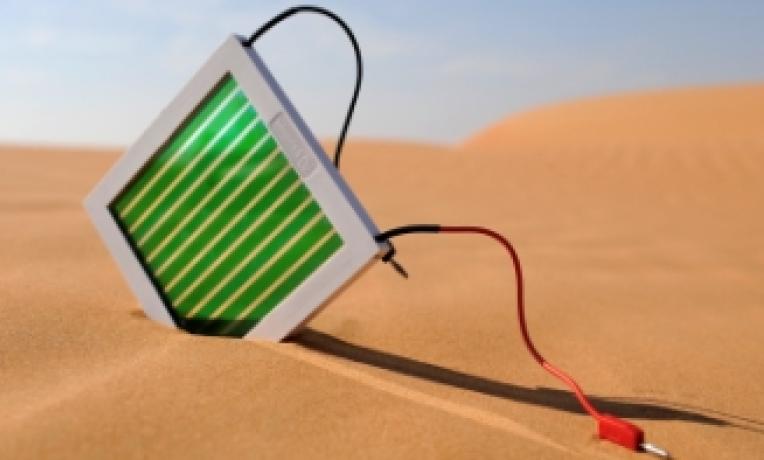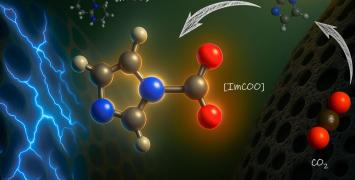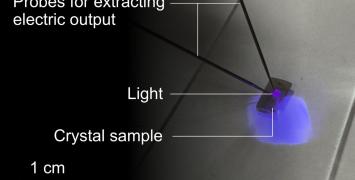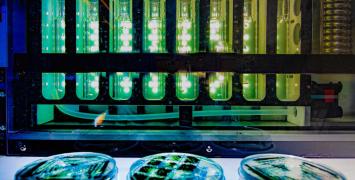ERC grantee mimics photosynthesis to increase further solar cells' efficiency
The Sun provides a steady source of power that could make solar energy a sustainable alternative to conventional sources of energy, provided that technological advances can actually reduce energy production costs. Prof. Michael Grätzel modified the composition of dye-sensitized solar cells to significantly increase their efficiency, including for indoor use. His result laid the ground for paradigm shifts that could revolutionise solar cells technology.
Portrait: © Alain Herzog / EPFL image: The Swiss Tech Convention Center in Lausanne, Switzerland, featuring a glass façade made of dye sensitized solar cells to provide electric power to the building, © Alain Herzog / EPFL

A group of scientists in EPFL’s Laboratory of Photonics and Interfaces, under the leadership of ERC grantee Professor Michael Grätzel, working in collaboration with Professor Eric Diau from the National Chiao Tung University, Hsinchu in Taiwan has improved the efficiency of the famous Grätzel solar cells to 12.3%. This performance is now comparable to thin film silicon-based solar panels that are on the market today. The costs of using this technology have also slightly come down. The results of their research appeared in Science in November 2011.
Talking about his MESOLIGHT project at a scientific seminar organised at the ERC executive agency in June 2011, Prof Grätzel said: “The photovoltaic conversion of sunlight into electric power by mesoscopic solar cells could still greatly be improved. With the support of the ERC’s grant, I intend to increase their efficiency up to 15% by 2014”.
The challenge was to increase the efficiency of the dye-sensitized cells, in order to produce more electricity. To do this, the chemists replaced the standard dye components – ruthenium and iodine – with porphyrin (a component of chlorophyll) and cobalt. This combination allows them to increase the absorption of sunlight and results in a more efficient electron exchange. It is this exchange of electrons from the dye to the substrate that produces electricity.
Grätzel cells mimic the process of plant photosynthesis, and these new dye-sensitized cells take the imitation even closer -- the new chemical combination gives them a greenish tint. This color increases the efficiency of the process that converts light energy into electricity. To get the most out of the light coming from the sun, the cell absorbs the colors of the spectrum with the highest energies and rejects the rest, which includes the green wavelengths.
Grätzel cells can be used to create flexible as well as transparent solar panels. They are a promising alternative for certain applications in which traditional rigid, silicon-based panels cannot be used.
Prof Grätzel added: “The first commercial use of the flexible dye-sensitized solar cells is to power portable electronic devices on backpacks in an eco-friendly way, so that the electricity produced helps to recharge a battery on-the-go for instance. The impact of such research in the building industry could be significant if these fully transparent dye-sensitized solar cells are employed in glass facades as smart windows where people can see through, while the window would act as a sun to energy conversion system".
Commenting on the research results, Prof. Jens Rostrup-Nielsen, Member of the ERC's Scientific Council declared: “Today, conventional sources of energy are slowly being replaced by renewable energies such as solar energy. Solar energy is the most abundant sustainable energy source but the feasibility also depends on scientific progress to reduce the costs. I am confident that the work of Prof Grätzel will contribute to a more efficient utilization of solar energy”. He added: “I am happy to see that the European Research Council is funding this type of research which has potential applications in many sectors of activities including in developing countries, and is thus contributing in pushing this alternative source of energy on the market”.
In addition, this new efficiency benchmark brings them well within the efficiency range of silicon cells: the theoretical maximum efficiency of Grätzel cells is 32%, compared with 28% for silicon.






